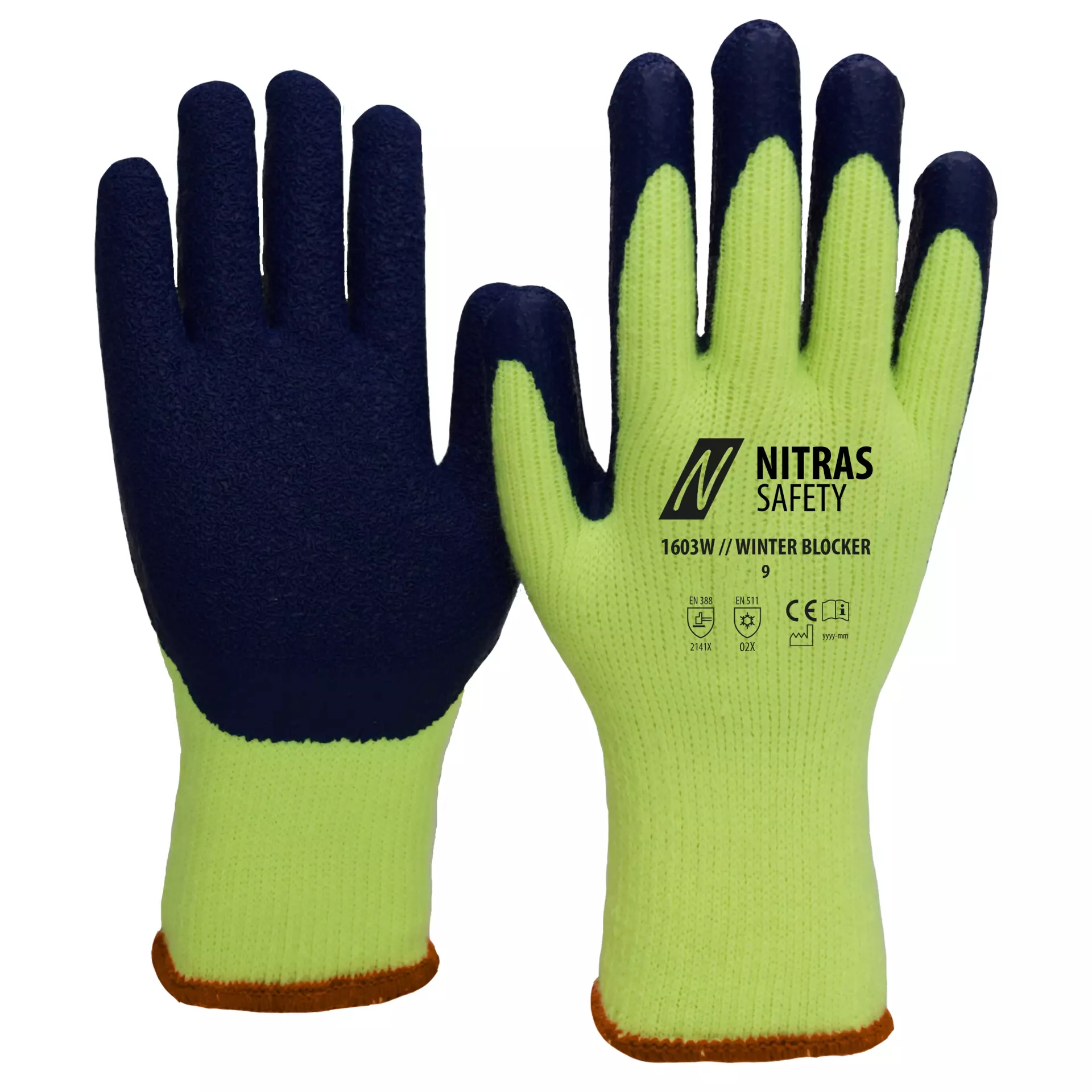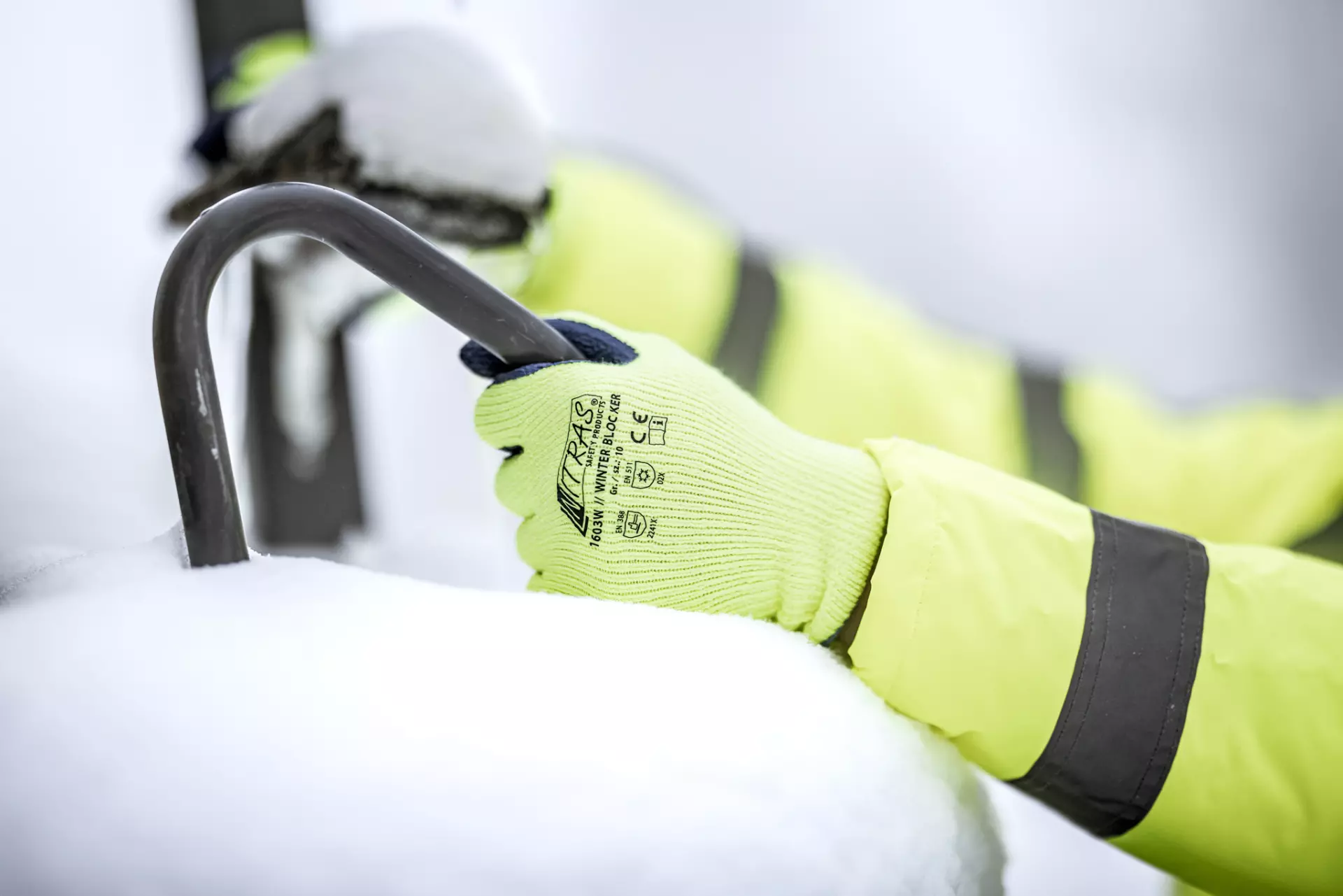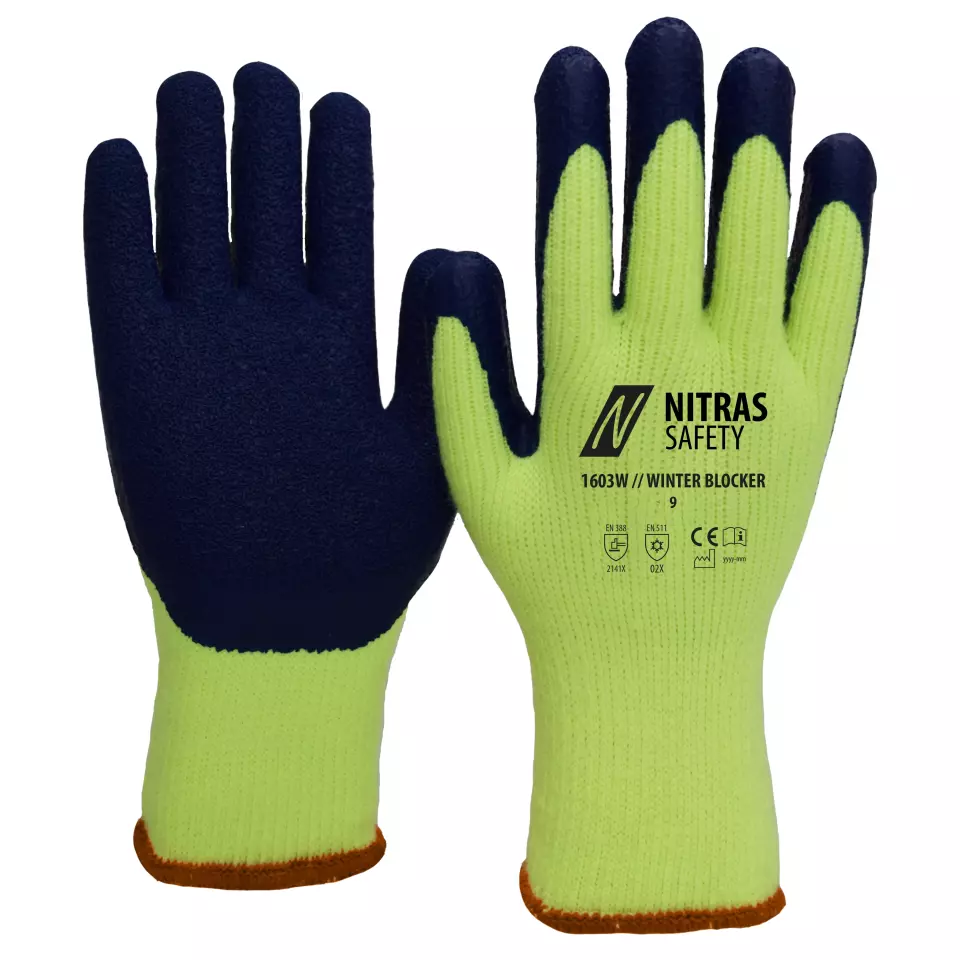

Features You'll Love

EN 388 · Tear Resistance Level 4, Puncture Resistance Level 1, Abrasion Resistance Level 2
EN 511 · Cold Contact Level 2
Offers the highest level of protection against tearing, withstanding a strong force before ripping.
Provides basic protection against punctures from blunt objects like splinters, not sharp points like needles.
Withstands moderate rubbing and friction, offering good protection for tasks involving handling rough materials.
This glove provides good insulation when directly handling cold objects for a moderate duration. It's ideal for tasks like working in cold stores or handling chilled or frozen items, offering a solid mid-range of thermal protection.
Nitras
WINTER BLOCKER Winter Gloves, Neon Yellow, 12 pairs
WINTER BLOCKER Winter Gloves, Neon Yellow, 12 pairs
(22)
29,76 €
Price per 12 pairs
2,48 € / pair
Choose size
Shipping fee is 7,95 € for orders under 80,00 €
Features You'll Love

EN 388 · Tear Resistance Level 4, Puncture Resistance Level 1, Abrasion Resistance Level 2
EN 511 · Cold Contact Level 2
Offers the highest level of protection against tearing, withstanding a strong force before ripping.
Provides basic protection against punctures from blunt objects like splinters, not sharp points like needles.
Withstands moderate rubbing and friction, offering good protection for tasks involving handling rough materials.
This glove provides good insulation when directly handling cold objects for a moderate duration. It's ideal for tasks like working in cold stores or handling chilled or frozen items, offering a solid mid-range of thermal protection.
Product description
Professional winter protection gloves featuring seamless terry cloth construction with latex coating for superior grip and comfort. These gloves combine excellent dexterity (Level 5) with protective features including partial palm and fingertip coating and a crinkled finish for enhanced grip. Certified to EN 388:2141X and EN 511:02X standards, they offer reliable protection against mechanical risks and cold conditions.
Product Features:
- Seamless knitted terry cloth interior for comfort
- Partial latex coating on palm and fingertips
- Crinkled finish for enhanced grip
- Knitted wrist for secure fit
- Maximum dexterity rating
Technical Details:
- EN 388:2141X certification
—Level 2 abrasion resistance
—Level 1 cut resistance
—Level 4 tear resistance
—Level 1 puncture resistance
—Level X TDM cut resistance
Standards:
- EN ISO 21420:2020 with Level 5 dexterity
- EN 511:02X cold protection
—Level 0 convective cold resistance
—Level 2 contact cold resistance
—Level X water penetration